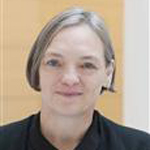 |
TATE |
|
Tate is a family of four galleries, Tate Britain, Tate Modern, Tate Liverpool and Tate St. Ives. Founded in 1897, Tate holds the United Kingdom’s national collection of British art since 1500 and of international and modern art since 1900, comprising a total of 67,663 works. Tate’s mission is to promote public knowledge, understanding and enjoyment of British, modern and contemporary art. Exhibition, learning and interpretation programmes enable visitors of all ages and backgrounds to experience and appreciate the national collection of art. Annually over 7,000,000 people visit the Tate galleries. Tate also leads the museum sector in exploiting new media technology, actively engaging large audiences through innovative online and multimedia programmes. There are almost 20,000,000 unique visits annually to Tate’s website. Since 1955, Tate’s Conservation Department has been one of the largest in the world, employing approximately 50 staff. Tate is a pioneer in the conservation of contemporary art; undertaking groundbreaking research into the cleaning of modern paints and developing innovative strategies in response to the deterioration of works of art made from plastic. Tate is also a leading centre for research in the visual arts and collection care, with Arts and Humanities Research Council Independent Research Organisation status, and research underpins many of Tate’s activities. Collaboration is fundamental to Tate’s research philosophy. Undertaken by specialists and scholars working inside and outside of the museum and using a range of methodologies – from study-based to practice-based, from the quantifiable to the experimental – research at Tate serves the needs of different practitioners and varied audiences in myriad ways. http://www.tate.org.uk/ |
|
Key Persons |
|
 |
Dr. Bronwyn Ormsby has been a Senior Conservation Scientist at Tate since May 2007, specialising in the scientific analysis of works of art and the evaluation of conservation treatments on modern and contemporary art. Prior to this, Bronwyn held the AXA Art (2006- 2007) and Leverhulme Trust (2003-2006) postdoctoral Research Fellowship positions at Tate 121 – where she carried out pioneering research into the effects of surface cleaning treatments on acrylic emulsion paint films and works of art. Bronwyn has extensive research experience in the analytical identification of polymers used in works of art using FTIR spectroscopy, GCMS and proven expertise for designing and the evaluating systems used for the surface cleaning of painted works of art. Bronwyn and her team won the 2010 ICON Anna Plowden Trust Award for Research and Innovation for the Tate AXA Art Modern Paints Project (2006-2009). Bronwyn has published over fifty papers in various formats and is currently an Assistant Coordinator for the International Council of Museums – Conservation Committee (ICOM-CC) Scientific Research Working Group (2008 -) and is a founding member of the Modern Oils Research Consortium (MORC). In addition to her position at Tate, Bronwyn delivers lectures, seminars and Continuous Professional Development workshops for conservators, conservation students and art history students internationally. She has published over 40 papers concerning the conservation of modern and contemporary art.
|
 |
Pip Laurenson is the Head of Collection Care Research at Tate. She has over twenty years of experience in the conservation of contemporary art beginning her career in Sculpture Conservation and going on to establish and lead Tate’s pioneering Time-based Media Conservation section from 1996 until 2010. In her current role she develops, leads and supports research related to the conservation and management of Tate's collections and has secured awards for research from a range of funders including private foundations, the European Union and the UK’s Arts and Humanities Research Council. She has overall management responsibility for Tate’s involvement in the NANORESTART project, is the lead for Tate on a major European funded project related to digital preservation, and has acted as the Principle Investigator or Co-Investigator on a number of innovative science and cultural heritage projects. Pip is passionately committed to collaborative research that serves and responds to art of our time and is currently supervising doctoral students with Leiden University and Kings College London. She received her PhD from University College London, is an accredited member of the Institute for Conservation, a trustee of the UK’s National Science and Heritage Forum, a member of the Steering Committee of the International Network for the Conservation of Contemporary Art and holds a special chair as Professor in Art Collection and Care at Maastricht University
|
 |
John McNeill joined Tate in 2013 as Collection Care Research Manager having previously worked in the metals and mining research sector both in London and abroad. John works with the Head of Collection Care Research to manage large externally funded research projects on topics ranging from the long-term preservation of digital objects to the collecting of performance art. He coordinates internal initiatives including interdepartmental secondments and bitesize research sprints, and directly contributes to research reports, project proposals and to the Collection Care Research strategy. John implements and manages large complex project budgets and supports all aspects of financial reporting and auditing. He has a particular interest in the structure and process of research and in implementing quantitative research methods and is also interested in understanding the working culture of researchers and users of research working collaboratively and how this can impact research practice. He has a PhD in analytical geochemistry from Durham University.
|





